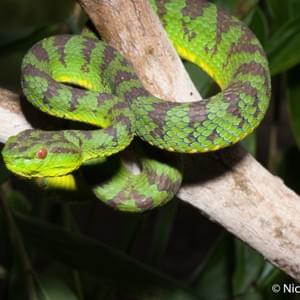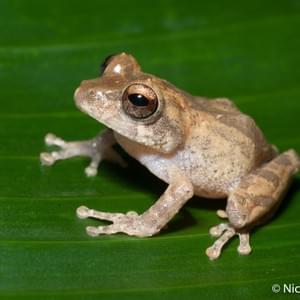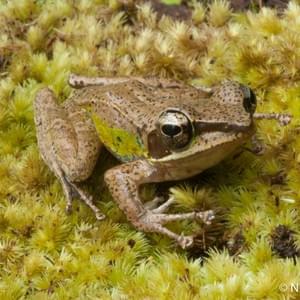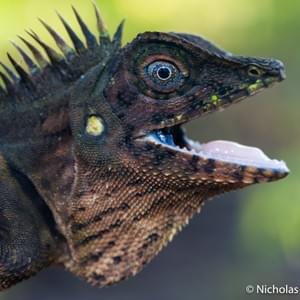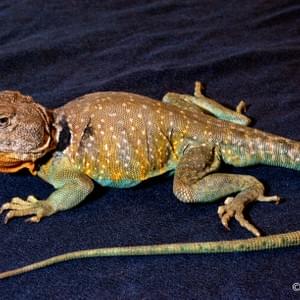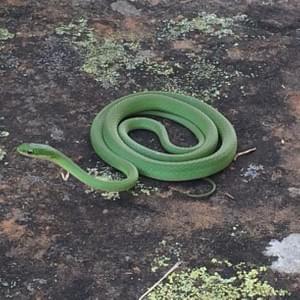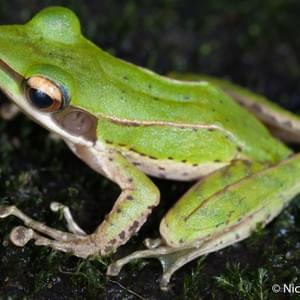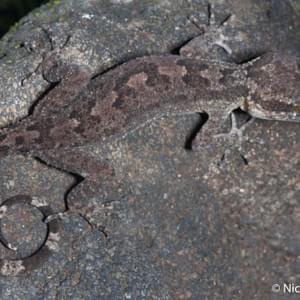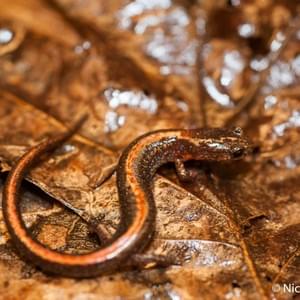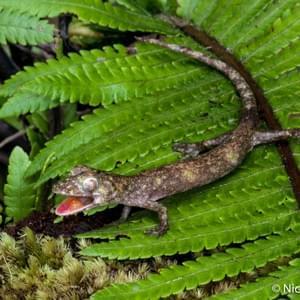
About Me
Academic Experience

Ph.D. in Biology
Temple University
I successfully defended my doctoral dissertation in the summer of 2022 under Matt Helmus as a member of the Integrative Ecology Lab in the Biology Department at Temple University in Philadelphia, Pennsylvania.
To learn more about my dissertation, "Building frameworks for understanding invasions and extinctions for biodiversity science", one can be view my defense (Vimeo) or read my submitted dissertation (Google Scholar).
Broadly, my academic research leverages publicly available data, natural history collections, and data science methods to better understand how biodiversity is changing in the Anthropocene. To date, I have focused primarily on how extinctions and introduction of non-native invasive species contribute to observed patterns of change.

Why Herpetology?
The reason why I focus on amphibians and reptiles
As far back as I can remember, I have always felt a strong interest in reptiles and amphibians. These organisms are great examples of the diversity and adaptability that can be found in nature. As a result, they are incredible focal taxa for studying how organisms interact and respond to their environments.
In this day and age, the need to be "eco-aware" is global. Often, an environment will shift in response to rapid change, and the way species react can indicate what is to come. Much like canaries in coal mines, amphibians and reptiles have become prime examples of such species, which makes them great model organisms. By understanding patterns in herpetofauna, we can make sense of broader ecological phenomena that can be applied to other systems as well.
In the iEcoLab, I have satisfied my life-long penchant for amphibians and reptiles through the study of Caribbean lizard extinctions and pursued new taxonomic horizons through investigations of the relationship between the spotted lanternfly (Lycorma delicatula) and its plant hosts.
Research
Doctoral Research
Paninvasion severity assessment of a U.S. grape pest
to disrupt the global wine market
Abstract
Economic impacts from plant pests are often felt at the regional scale, yet some impacts expand to the global scale through the alignment of a pest’s invasion potentials. Such globally invasive species (i.e., paninvasives) are like the human pathogens that cause pandemics. Like pandemics, assessing paninvasion risk for an emerging regional pest is key for stakeholders to take early actions that avoid market disruption. Here, I develop the paninvasion severity assessment framework and use it to assess a rapidly spreading regional U.S. grape pest, the spotted lanternfly planthopper (Lycorma delicatula; SLF), to spread and disrupt the global wine market. I found that SLF invasion potentials are aligned globally because important viticultural regions with suitable environments for SLF establishment also heavily trade with invaded U.S. states. If the U.S. acts as an invasive bridgehead, Italy, France, Spain, and other important wine exporters are likely to experience the next SLF introductions. Risk to the global wine market is high unless stakeholders work to reduce SLF invasion potentials in the U.S. and globally.
Predicting host associations of the invasive spotted lanternfly
on trees across the U.S.A.
Abstract
Global impacts of invasive insect pests cost billions of dollars annually, but the impact of any individual pest species depends on the strength of associations with economically important plant hosts. Estimating host associations for a pest requires surveillance field surveys that observe pest association on plant species within an invaded area. However, field surveys often miss rare hosts and cannot observe associations with plants found outside the invaded range. Associations for these plants instead are estimated with experimental assays such as controlled feeding trials, which are time consuming and for which few candidate hosts can be tested logistically. For emerging generalist pests, these methods are unable to rapidly produce estimates for the hundreds of potential suitable hosts that the pest will encounter as it spreads within newly invaded regions. In such cases, association data from these existing methods can be statistically leveraged to impute unknown associations. Here I use phylogenetic imputation to estimate potential host associations in an emergent generalist forest pest in the U.S., the spotted lanternfly (Lycorma delicatula; SLF). Phylogenetic imputation works when closely related plants have similar association strengths, termed phylogenetic signal in host association, which is common in phytophagous insects. I first aggregated known SLF host associations from published studies. Existing research has estimated association strengths for 144 species across both the invaded and native range of SLF. These known associations exhibited phylogenetic signal. I then developed two protocols that combined known host association data and fit phylogenetic imputation models based on hidden state prediction algorithms to estimate association strength for 569 candidate tree species found across the continental U.S. Of candidate species considered, 255 are predicted to have strong associations with SLF in the U.S. and can be found in several clades including Juglandaceae, Rutaceae, Salicaceae, and Sapindaceae. Uninvaded regions with the highest numbers of these strongly associated species include midwestern and west coast states such as Illinois and California. Survey efforts for SLF should be focused on these regions and predicted species, which should also be prioritized in experimental assays. Phylogenetic imputation scales up existing host association data, and the protocols I present here can be readily adapted to inform surveillance and management efforts for other invasive generalist plant pests.
Testing general models of non-random extinction indicates
historic directional extinction is followed by contemporary stabilizing extinction within a genus of island lizards
Abstract
The rate of extinction is accelerating in the Anthropocene. Humans have greatly intensified extinction pressures, making efforts to detect general non-random patterns of extinction increasingly important. Much research has focused on detecting which characteristics make some species more likely to go extinct than others, such as large body size and slow reproductive rate in animals; limited dispersal range in vascular plants and narrow habitat requirements in cacti. However, general models for such non-random characteristic patterns of extinction are lacking. Here, I adapt the three general models of natural selection to classify non-random extinction as directional, disruptive, or stabilizing extinction. I develop a quantitative method for testing which of the three general extinction models best describes observed extinction data and apply it to the Caribbean lizard genus Leiocephalus as a case study. I surveyed the literature for recorded dates of last occurrence for extinct species and obtained threat status for extant species. Eight species of Leiocephalus have gone extinct and ten species are predicted to go extinct in the near future based on IUCN red list categories. Past extinctions in Leiocephalus showed directional extinction of large bodied species, while future-predicted extinctions exhibited a more complex extinction model similar to both random and stabilizing extinction with respect to body size. Similarly, future-predicted extinctions exhibited stabilizing extinction with respect to limb and tail lengths. Lizards with either very long or very short appendages are most likely to go extinct in the future. This shift from directional to stabilizing extinction for Leiocephalus is consistent with hunting, introduced predators, and habitat loss that first increased extinction pressure on the largest species and then extinction pressure on species that deviate from an adaptive peak centered on a generalist ground-lizard body plan. As adaptive optima shift in the Anthropocene, general models of non-random extinction are essential to developing a mature strategy for future successful conservation efforts.


